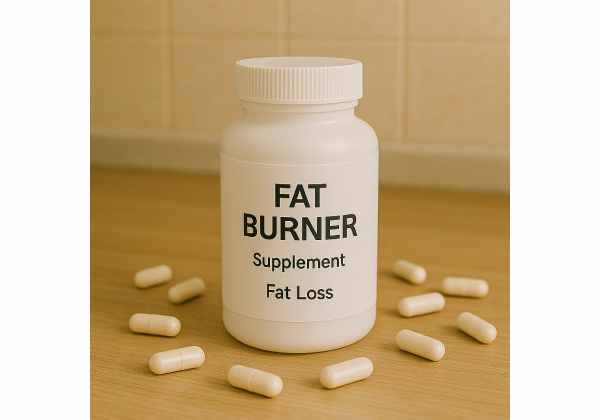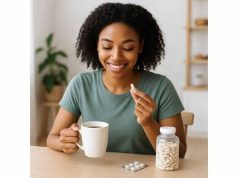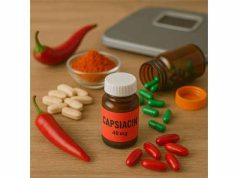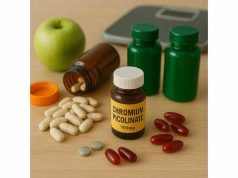Modern “fat burner” supplements promise faster fat loss with capsules, teas, or powders. Labels claim to raise metabolism, curb appetite, and cut cravings—often with botanical blends and stimulants. Some ingredients have modest evidence; many do not. Others carry real risks, especially for people with heart conditions, anxiety, or those taking certain medications. This guide explains what fat burners are, what realistic results look like, and how to evaluate products safely. If you’re exploring science-backed paths alongside lifestyle changes, learn about clinically tested medical options for weight management that may be safer and more effective than unregulated blends.
Table of Contents
- What are “fat burner” supplements?
- Do fat burners work?
- How fat burners claim to work
- Side effects and safety risks
- How to check a fat burner label
- When a single ingredient might help
- Safer alternatives and next steps
- Frequently Asked Questions
What are “fat burner” supplements?
“Fat burner” is a marketing term, not a scientific category. These products bundle stimulants, plant extracts, fibers, and sometimes diuretics or laxatives to claim three main effects: burn more calories, suppress appetite, and increase fat oxidation. They appear as pills, powders, “detox teas,” and pre-workout blends. Labels often highlight thermogenesis (heat production) and metabolism, but the mechanisms vary widely by formula.
Common ingredients include caffeine, green tea extract (EGCG), capsaicin/capsiate (from chili peppers), yohimbine, bitter orange (synephrine), L-carnitine, CLA (conjugated linoleic acid), green coffee bean extract (chlorogenic acids), garcinia cambogia (hydroxycitric acid), various fibers (glucomannan, psyllium), and diuretics like dandelion. Doses range from evidence-based to trace amounts. Many products use “proprietary blends,” which list total milligrams for a mix but hide ingredient-level doses—making it impossible to assess efficacy or safety.
Regulation matters. In most countries, including the United States, supplements are sold without pre-market approval for safety or effectiveness. Manufacturers are responsible for quality control, but oversight typically happens after problems are reported. Independent third-party testing (USP, NSF, Informed Choice) is voluntary, not required. That gap explains why products are sometimes contaminated or spiked with undeclared stimulants or drug analogs.
What can a consumer reasonably expect? A supplement cannot replace a calorie deficit, sufficient protein, and resistance training. At best, certain ingredients can provide a small edge—think tens of calories per day or slightly better appetite control. The more dramatic a claim (“torch fat fast,” “melt belly fat”), the more it deserves scrutiny.
If you’re early in your journey, prioritize fundamentals—adequate sleep, a sustainable eating pattern, and activity—before considering add-ons. A solid primer on those pillars is available in our evidence-based guide to losing weight safely. Use supplements, if at all, as optional support rather than a central strategy.
Key takeaways in this section
- “Fat burner” is marketing shorthand; formulas differ substantially.
- Proprietary blends obscure doses; effects and risks hinge on amounts.
- Regulation is light; choose independently tested products if you choose to try one.
- Realistic benefits are modest and depend on diet and activity first.
Do fat burners work?
The short answer: sometimes a little, often not meaningfully, and results depend on the specific ingredient and dose—not the “fat burner” label.
Ingredients with modest supportive evidence (at appropriate doses):
- Caffeine: Can acutely raise energy expenditure and improve workout output. Meaningful effects usually require standardized dosing (e.g., 3–6 mg/kg pre-exercise) rather than the vague amounts in blends. People vary in response and tolerance. For deeper dosing and timing guidance, see our overview of caffeine dosing and safety.
- Green tea extract (EGCG): In some studies, catechins combined with caffeine yield small increases in daily calorie burn and modest fat loss, especially in caffeine-naïve individuals. Effects are inconsistent and depend on total catechin content and caffeine co-administration.
- Capsaicin/capsiate: May slightly increase thermogenesis and reduce appetite when standardized capsinoids are used regularly. Tolerability can be a limiting factor.
- Soluble fiber (e.g., glucomannan, psyllium): Not a “burner,” but can aid satiety, slow gastric emptying, and reduce overall calorie intake when taken before meals. Forms and doses matter.
Ingredients with mixed or weak evidence:
- CLA: Some trials show small changes in body composition; others show little to no effect. Gastrointestinal side effects are common.
- L-carnitine: Potentially helpful in specific deficiencies (e.g., older adults, vegetarians) but generally limited effects in healthy adults with adequate dietary intake.
- Green coffee bean extract: Early positive studies were offset by later, more rigorous trials showing minimal benefit at typical doses.
- Garcinia cambogia: Largely underwhelming effects with safety questions at high doses or in combination products.
Ingredients of concern or context-specific use:
- Yohimbine: May enhance fat mobilization in lean athletes under controlled conditions (e.g., fasted training) but carries a notable side-effect profile (anxiety, elevated blood pressure, heart palpitations).
- Synephrine/bitter orange: Stimulant effects with heart-related risks, especially when stacked with caffeine or in people with underlying conditions.
- “Prohormone” or designer stimulant blends: Sometimes adulterated; avoid.
What “works” actually looks like
- Thermogenic ingredients might add roughly 50–150 extra calories burned per day for some users. That’s the equivalent of a small snack, not a free pass.
- Appetite effects vary widely; for many, structured meals, protein at each meal, and fiber produce more predictable results than stimulant blends.
- Exercise synergies (e.g., caffeine before lifting) can improve performance, which indirectly supports fat loss through better training quality and adherence.
If a product claims weekly fat loss of multiple pounds without diet changes, be skeptical. Rapid “losses” often reflect water and glycogen shifts, not fat.
How fat burners claim to work
Marketers usually cite one or more of four mechanisms. Understanding them helps you evaluate labels and set expectations.
- Thermogenesis (burning more calories).
Stimulants (caffeine, synephrine) and certain botanicals (capsaicin/capsiate, green tea catechins) can nudge daily energy expenditure up. The increase is typically small and short-lived, and your body adapts over time (tolerance). Most studies show the biggest effect in caffeine-naïve users and when standardized doses are used consistently. - Appetite and cravings.
Some ingredients blunt hunger or slow gastric emptying. Soluble fibers (glucomannan, psyllium) swell with water and increase fullness. Capsaicin may reduce desire for energy-dense foods in some people. Caffeine can acutely suppress appetite, though rebound hunger later in the day is common. - Fat oxidation and mobilization.
Yohimbine and caffeine can increase circulating free fatty acids during fasted exercise, potentially enhancing fat oxidation in trained individuals. This is context-dependent and not a substitute for overall calorie balance. - Absorption changes and water loss.
Carb/fat “blockers” rarely have meaningful real-world effects at typical doses. Diuretics (dandelion, caffeine) reduce water weight—not body fat—and can mask dehydration. Laxatives or “detox teas” lead to stool and water loss, not fat loss, and can disrupt electrolytes.
Why results fluctuate
- Dose and standardization: EGCG content, capsinoid standardization, and caffeine milligrams matter. Proprietary blends hide this.
- Timing and context: Caffeine before a workout aids performance more reliably than random dosing. Fiber before meals beats fiber without meal timing.
- Individual variability: Genetics (e.g., caffeine metabolism), gut tolerance, sleep quality, and stress all influence response.
Before purchasing a blend, learn to read supplement labels: check active doses, serving sizes, and daily totals. If you cannot verify a clinically relevant dose for its key claims, assume the effect will be small.
Side effects and safety risks
Risks range from nuisance side effects to serious events. Safety depends on the ingredient, dose, interactions, and whether the product contains undeclared substances.
Common side effects
- Stimulant-related: Anxiety, jitteriness, insomnia, elevated heart rate and blood pressure, headaches, and GI upset. Stacking multiple stimulants (e.g., caffeine + synephrine + yohimbine) increases risk.
- GI issues: Bloating, diarrhea, cramping—especially with sugar alcohols, high doses of CLA, or laxative herbal blends.
- Sleep disruption: Even afternoon caffeine can cut deep sleep. Poor sleep undermines appetite control and makes fat loss harder.
More serious concerns
- Cardiovascular events: Palpitations, arrhythmias, chest pain—reported with stimulant combinations and “energy” blends. Pre-existing hypertension, arrhythmias, or use of stimulant medications raise risk further.
- Liver injury: Idiosyncratic reactions have been linked to some green tea extracts at high catechin doses, garcinia cambogia, and multi-ingredient “fat burner” products. Symptoms include fatigue, dark urine, abdominal pain, and jaundice; seek medical care promptly.
- Psychiatric effects: Yohimbine can intensify anxiety or panic and interact with antidepressants and blood pressure medications.
- Adulteration and contamination: Some products have been found spiked with banned drugs or analogs. Choose brands that publish rigorous testing.
Who should avoid fat burners
- People with heart disease, uncontrolled hypertension, arrhythmias, glaucoma, or hyperthyroidism.
- Those who are pregnant or breastfeeding.
- Anyone with anxiety disorders or panic attacks (especially with yohimbine or high stimulants).
- People on interacting medications (e.g., MAO inhibitors, certain antidepressants, stimulants, anticoagulants).
- Adolescents—focus on habits, growth, and medical guidance when needed.
If you are curious about a targeted compound with a higher-risk profile, review detailed safety notes on specific ingredients—such as our guide to yohimbine risks—before considering use. When in doubt, discuss plans with a clinician or pharmacist who can screen for interactions.
How to check a fat burner label
A careful label review protects you from wasted money and unnecessary risk. Use this checklist before buying:
1) Prioritize transparency.
Avoid “proprietary blends” that hide doses. For each star ingredient, you should see an exact milligram amount and, when relevant, a standardization (e.g., “green tea extract, 300 mg, 50% EGCG”).
2) Confirm a plausible dose.
Compare the listed dose to amounts used in clinical research. If a product sprinkles 20 mg of capsaicin into a 600 mg “thermo blend,” that may be mostly filler. Likewise, a fiber capsule with 500 mg of glucomannan is unlikely to change appetite; meaningful protocols often use grams, taken with water before meals.
3) Look for third-party testing.
Because supplement quality varies, independent certification reduces risk of contamination or mislabeling. Labels or batch certificates from USP, NSF, or Informed Choice are good signs. Learn how certifications work in our explainer on third-party testing.
4) Watch the stimulant load.
Total your daily stimulant intake—coffee, tea, energy drinks, plus the supplement. Many “two capsule” servings contain the caffeine of one to two strong coffees, sometimes more when combined with other stimulants.
5) Scan for red flags.
Grandiose claims (“melt fat,” “rapid shred”), “detox” language, and long ingredient lists without doses are warning signs. Avoid anything leaning on banned or experimental stimulants, or vague terms like “methylxanthine complex” without specifics.
6) Consider pill burden and timing.
Four capsules, three times daily, is a compliance trap. If the plan is too complicated to maintain, the real-world effect will be minimal.
7) Start low, monitor, and reassess.
If you proceed, start at half the suggested dose, track sleep, heart rate, mood, appetite, and training quality for two weeks, and stop if side effects outweigh benefits.
When a single ingredient might help
Multi-ingredient “fat burners” often combine a small amount of what works with a lot that does not. In some situations, a single, standardized ingredient used intentionally can be safer and easier to evaluate.
Caffeine (timed to training).
For people who tolerate it, caffeine 30–60 minutes before workouts can improve performance and perceived effort. Better sessions compound over time into better results. Keep a consistent daily cut-off (e.g., before 2 p.m.) to protect sleep.
Green tea extract or green tea.
If you are caffeine-naïve, a modest green tea catechin + caffeine combo can slightly raise calorie burn. Prefer standardized extracts from reputable brands, or opt for brewed tea if you mainly want a mild lift.
Capsinoids/capsaicin.
Standardized capsinoids may nudge thermogenesis and appetite in some users. Start small to test GI tolerance.
Protein and fiber.
These are not “burners,” yet they consistently help with satiety and weight management. A protein shake after training or as a meal component can reduce later snacking. Taking soluble fiber with water 15–30 minutes before meals can support fullness; compare fiber options by form and dose.
Who benefits most
- People already managing calories and training regularly who want a marginal edge.
- Those who prefer evidence-based, single-ingredient trials over complex blends.
- Individuals who prioritize sleep and recovery; stimulants should never compromise these.
Who should not use single-ingredient stimulants
Anyone with the conditions and medication conflicts outlined in the safety section above.
Safer alternatives and next steps
If your goal is fat loss you can maintain, your plan should rest on proven levers and measured expectations.
Build your base
- Nutrition: Aim for a modest calorie deficit (e.g., 300–500 calories/day), 1.6–2.4 g protein/kg/day depending on training, and mostly minimally processed foods.
- Training: Combine resistance training (2–4 days/week) with moderate cardio or daily step goals (e.g., 7,000–10,000 steps).
- Sleep and stress: Prioritize 7–9 hours; poor sleep raises appetite hormones and undermines consistency.
Consider targeted supports
- Creatine for strength maintenance during a cut (it may increase water weight but helps preserve muscle).
- Protein shakes for convenience where whole-food protein is hard to meet.
- Bland over blend: If experimenting with thermogenic support, favor single, standardized ingredients, introduced one at a time.
When to seek clinical support
- A BMI or metabolic risk profile that warrants prescription therapies.
- Repeated weight cycling where medical, nutritional, and behavioral care could improve outcomes.
- Red flags such as disordered eating, severe fatigue, chest pain, or persistent GI or liver symptoms—stop supplements and seek care.
Think of fat burners, at best, as optional accessories. Sustainable fat loss comes from consistent habits and, when appropriate, clinician-guided treatments—not from a bottle that promises to rewrite physiology.
Frequently Asked Questions
How much weight can fat burners really help you lose?
Most legal fat burner ingredients contribute modest effects—often the calorie equivalent of 50–150 kcal/day. Over several months, that could translate into a few extra pounds if diet and training are consistent. Without a calorie deficit and exercise, effects are usually negligible.
Are fat burner supplements safe to take every day?
Daily use increases tolerance and side-effect risk, particularly with stimulants. Common issues include anxiety, insomnia, elevated heart rate, and GI upset. Long-term safety data for many blends are limited. If you use one, cycle breaks and monitor sleep, mood, and blood pressure.
Do detox teas help with fat loss?
Detox teas mainly act as diuretics or laxatives, leading to water and stool loss rather than fat reduction. They can cause dehydration and electrolyte imbalances and may interfere with medications. Sustainable fat loss requires calorie control, protein, and activity, not purgatives.
Is green tea extract better than drinking green tea?
Extracts provide standardized catechins at known doses but carry a higher risk of GI upset and, rarely, liver injury at high doses. Brewed tea offers milder effects with a safer profile. Choose based on your tolerance, caffeine intake, and overall goals.
Can fat burners replace diet and exercise?
No. Supplements cannot compensate for excess calorie intake or inactivity. At best, certain ingredients provide a small boost to calorie burn or appetite control. Lasting results depend on nutrition, training, sleep, and behavior change; supplements are optional.
Who should avoid yohimbine or synephrine?
People with anxiety, hypertension, heart disease, arrhythmias, or those on interacting medications should avoid these stimulants. Side effects can include spikes in blood pressure, palpitations, and panic symptoms. Safer, non-stimulant strategies are preferable for most users.
References
- International society of sports nutrition position stand: caffeine and exercise performance (2021) (Guideline)
- Does green tea catechin enhance weight-loss effect of exercise training in overweight and obese individuals? a systematic review and meta-analysis of randomized trials (2024) (Systematic Review & Meta-analysis)
- The effects of capsaicin intake on weight loss among overweight and obese subjects: a systematic review and meta-analysis of randomised controlled trials (2023) (Systematic Review & Meta-analysis)
- Psyllium is a natural nonfermented gel-forming fiber that is effective for weight loss: A comprehensive review and meta-analysis (2023) (Systematic Review & Meta-analysis)
- Green Tea (2020)
Disclaimer
This article provides general information for educational purposes and does not replace personalized medical advice. Always consult a qualified healthcare professional before starting or stopping any supplement or medication, especially if you have medical conditions, are pregnant or breastfeeding, or take prescription drugs.
Share and follow
If you found this guide useful, consider sharing it with a friend who is sorting through supplement claims. For more practical, evidence-based insights, follow us on the social platform you use most. We appreciate your support and questions.

















